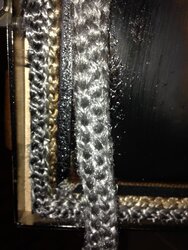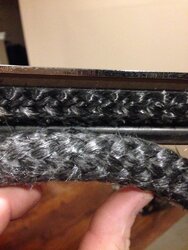kennyp2339
Minister of Fire
My princess update, a few weeks ago I ordered and installed a convection deck and OAK on my princess, I uploaded some pictures and BKVP said the OAK was not installed properly and to take it all down.
I acknowledged the advice and started doing research on OAK installs, since I never heard of anything like this in the instructions.
My problem with the install was that the stove is located in the basement of my house, the oak connected to the stove, then was installed straight up on the block wall about 5ft then outside to day light, supposedly under extreme circumstances (right conditions) the stove could reverse draft and the oak could act like a chimney and smoke / heat could escape it, lighting the house on fire, or smoke could leak into the living space and co poisoning could occur.
I don't take that kind of stuff lightly, I love heating with wood and don't want to be constantly wondering if I'm going to have a problem. So back to my research, I never did come across anything that referenced what BKVP said, (I'm certainly not calling him out on this, and don't mean that to be negative) I've actually seen quite the opposite with gas installs; were they install in an existing chimney and run both the exhaust and oak pipes in the same flue terminating almost at the same height, I also read up on gas furnace installs were they install the oak and exhaust relatively in the same area's with pvc pipe.
After reading this I left my oak connected to the stove and monitored it daily to see if I had any reverse draft conditions, thankfully I did not, but I developed a new problem.
Running a 3" oak with a rise/fall of 5ft along with a 6" class a chimney about 22ft high straight up caused an excessive draft problem, I could literally feel the excess cold air coming out of the top of the thermostat cover on the stove, my burning conditions changed also, setting 2 was like running the poor princess full bore, it was also loosing a lot more heat up the chimney, my thermometer which normally reads in the 250deg range (pre oak) jumped to a cruising temp of 450, when I would load the stove and open the door, it would sound like a freight train (not good) I also experienced a major decrease in burn times.
keeping the t-stat a setting 1 was the new sweet spot, but I knew this was not right, After a couple of days running the stove like this I took the oak apart, everything went back to normal and now the house is warmer than ever with the convection deck.
I acknowledged the advice and started doing research on OAK installs, since I never heard of anything like this in the instructions.
My problem with the install was that the stove is located in the basement of my house, the oak connected to the stove, then was installed straight up on the block wall about 5ft then outside to day light, supposedly under extreme circumstances (right conditions) the stove could reverse draft and the oak could act like a chimney and smoke / heat could escape it, lighting the house on fire, or smoke could leak into the living space and co poisoning could occur.
I don't take that kind of stuff lightly, I love heating with wood and don't want to be constantly wondering if I'm going to have a problem. So back to my research, I never did come across anything that referenced what BKVP said, (I'm certainly not calling him out on this, and don't mean that to be negative) I've actually seen quite the opposite with gas installs; were they install in an existing chimney and run both the exhaust and oak pipes in the same flue terminating almost at the same height, I also read up on gas furnace installs were they install the oak and exhaust relatively in the same area's with pvc pipe.
After reading this I left my oak connected to the stove and monitored it daily to see if I had any reverse draft conditions, thankfully I did not, but I developed a new problem.
Running a 3" oak with a rise/fall of 5ft along with a 6" class a chimney about 22ft high straight up caused an excessive draft problem, I could literally feel the excess cold air coming out of the top of the thermostat cover on the stove, my burning conditions changed also, setting 2 was like running the poor princess full bore, it was also loosing a lot more heat up the chimney, my thermometer which normally reads in the 250deg range (pre oak) jumped to a cruising temp of 450, when I would load the stove and open the door, it would sound like a freight train (not good) I also experienced a major decrease in burn times.
keeping the t-stat a setting 1 was the new sweet spot, but I knew this was not right, After a couple of days running the stove like this I took the oak apart, everything went back to normal and now the house is warmer than ever with the convection deck.




